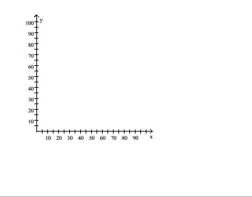Plot and interpret the appropriate scatter diagram.
-The one-day temperatures for 12 world cities along with their latitudes are shown in the table below. Make a
scatter diagram for the data. Describe what happens to the one-day temperatures as the latitude increases. Latitude (degrees)  Temperature (F)°
Temperature (F)°
Definitions:
Standard Deviation
A procedure for calculating the extent of dispersion or variability among a group of data values.
Range
In statistics, the difference between the largest and smallest values in a dataset, describing its spread.
IQR
Interquartile Range, a measure of statistical dispersion being the difference between the upper and lower quartiles.
Stem-And-Leaf
A graphical method used to display quantitative data in order to assist in visualizing its distribution.
Q42: <span class="ql-formula" data-value="f ( x ) =
Q48: If <span class="ql-formula" data-value="h (
Q49: 4, 12, 36, 108, 972, ...<br>A) Arithmetic<br>B)
Q75: <span class="ql-formula" data-value="\left\{ \begin{array} { l }
Q84: <span class="ql-formula" data-value="f(x)=\left\{\begin{array}{ll}-x+3 & \text { if
Q92: <span class="ql-formula" data-value="\begin{array} { c | c
Q94: The gravitational attraction A between two masses
Q105: A lumber yard has fixed costs of
Q159: <img src="https://d2lvgg3v3hfg70.cloudfront.net/TB7856/.jpg" alt=" Find the numbers,
Q211: f(x)=1<br><img src="https://d2lvgg3v3hfg70.cloudfront.net/TB7856/.jpg" alt="f(x)=1 A)